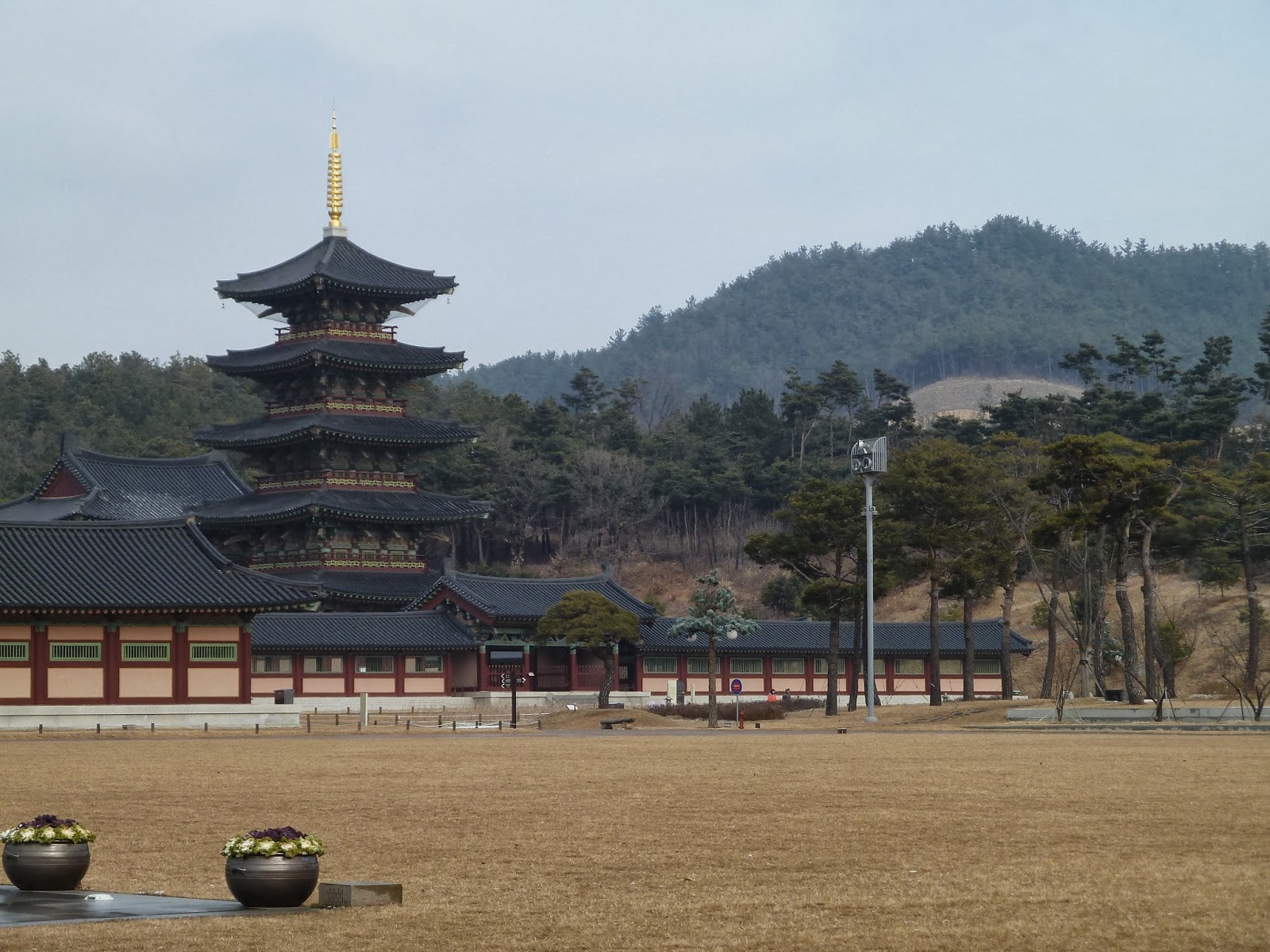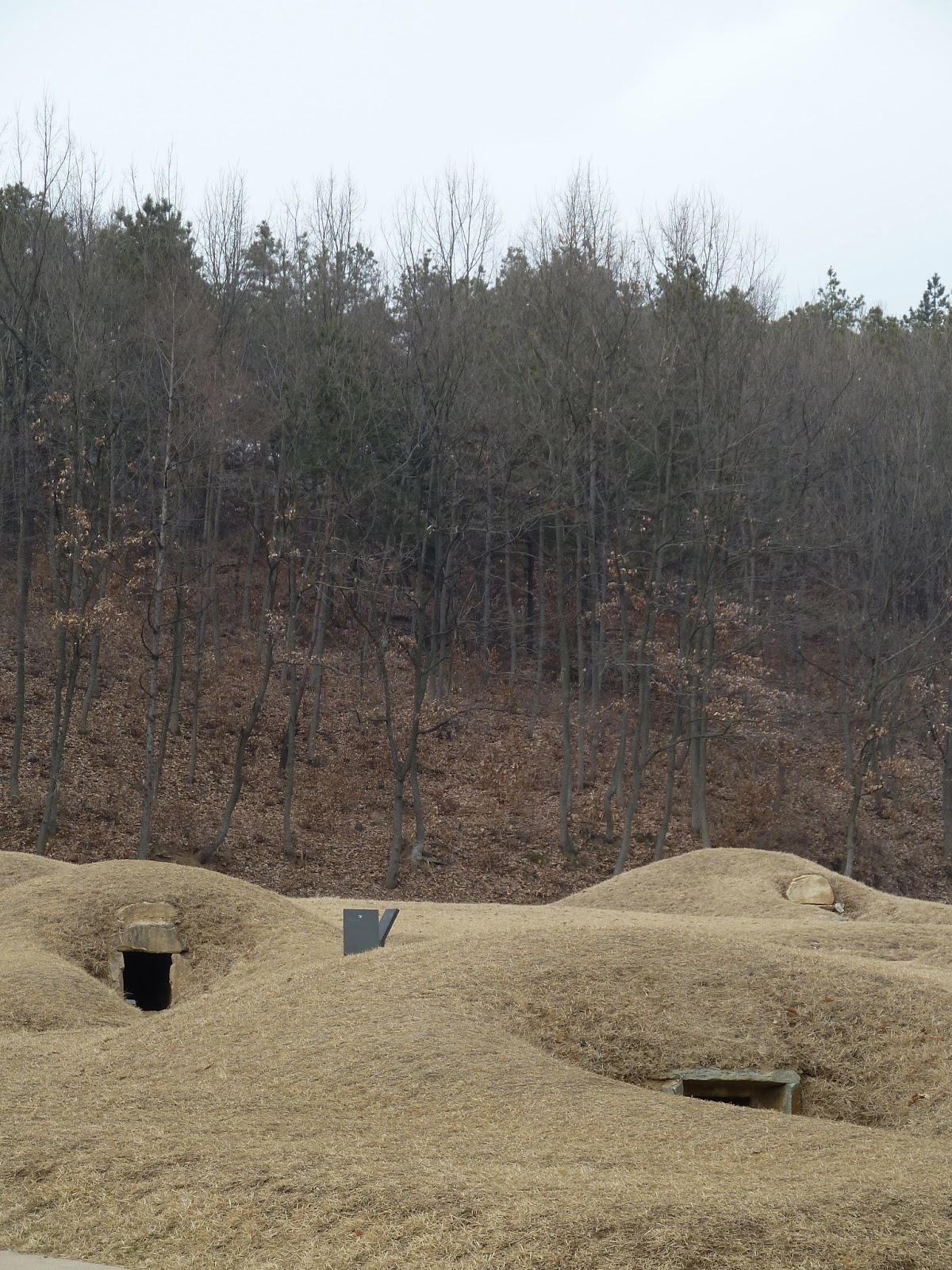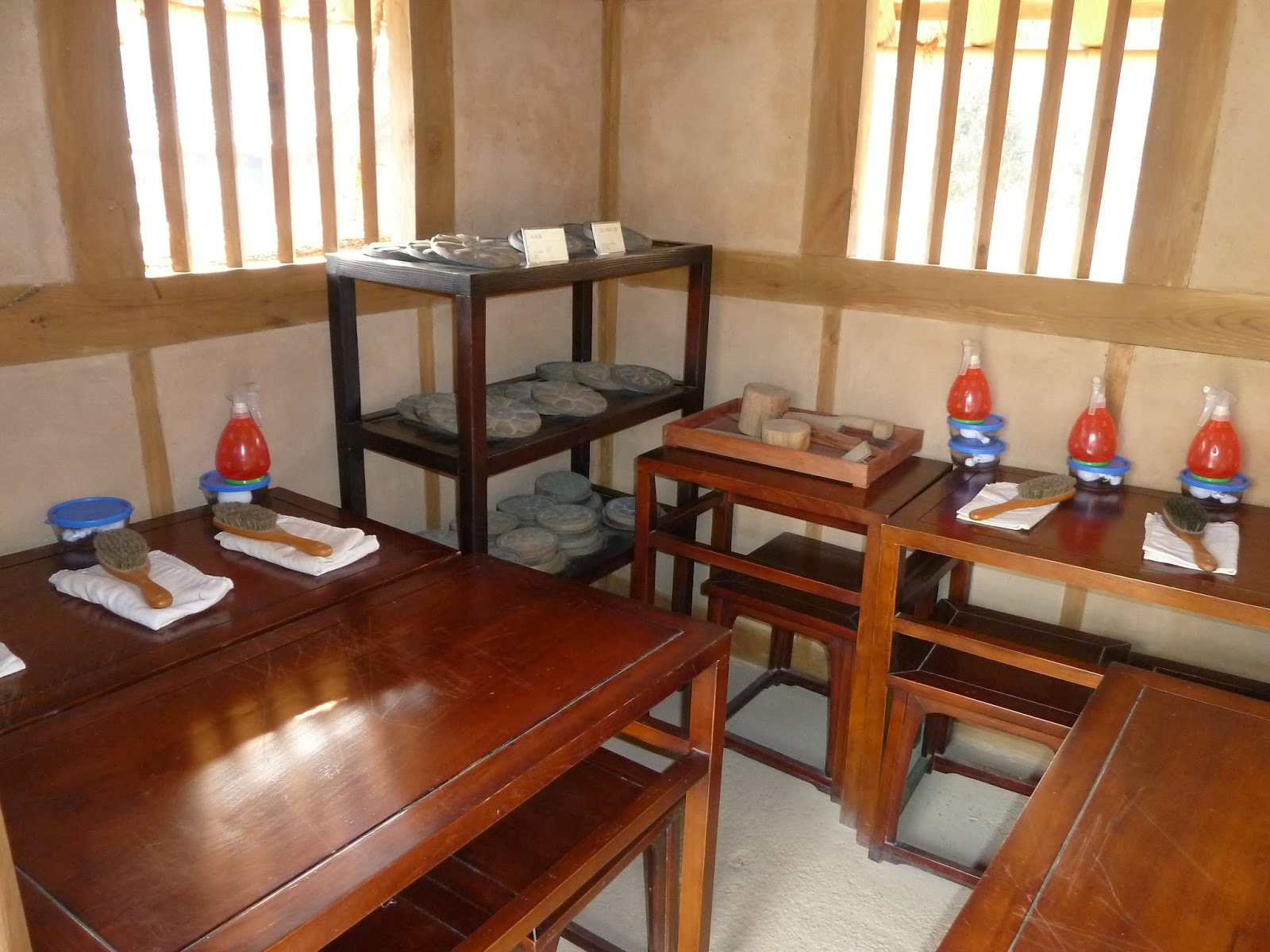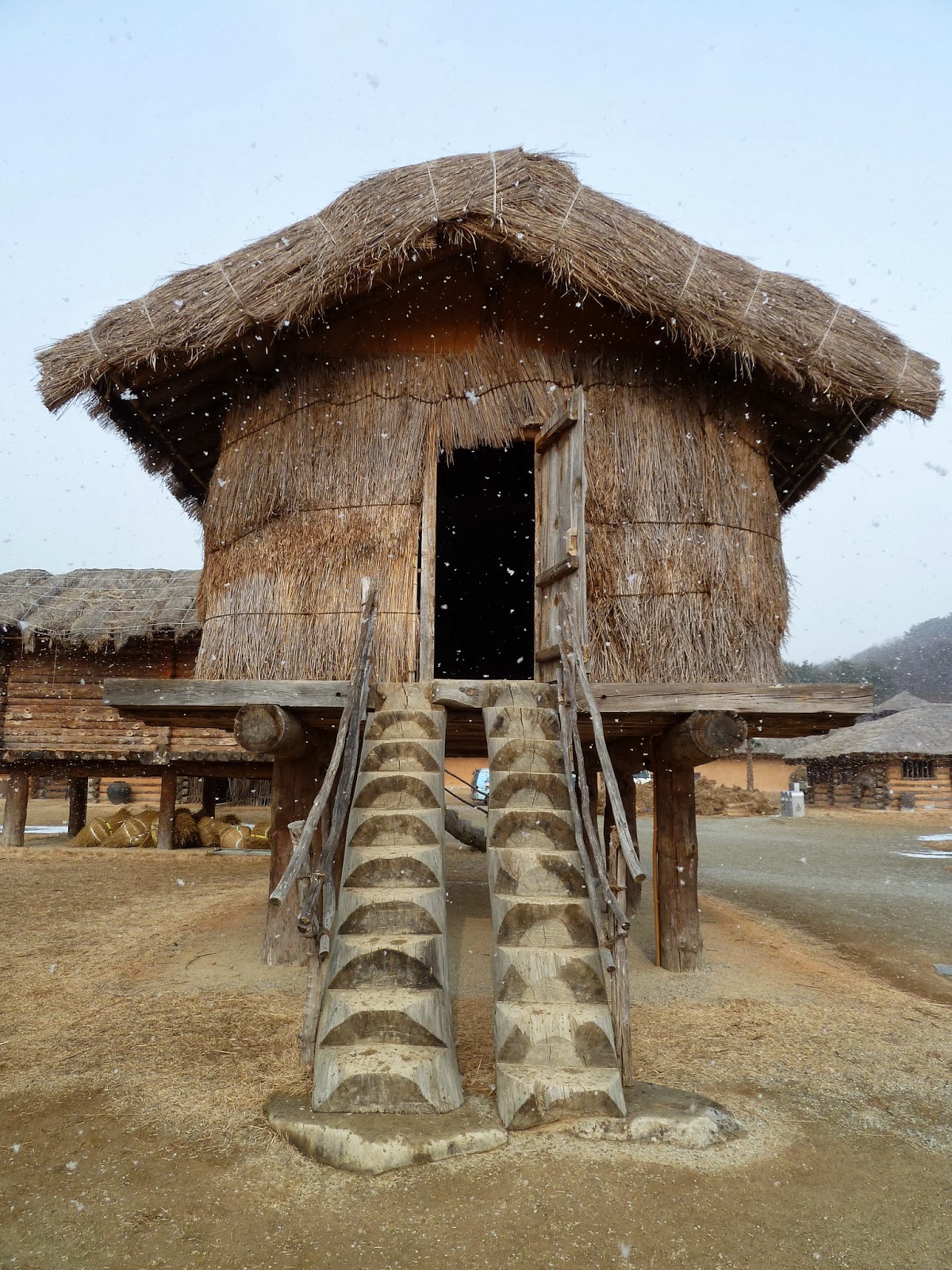We checked into the Lotte Buyeo - a history and culture themed resort - on Friday morning, January 10, 2014 and left the following morning. This was a quick trip, but I had all afternoon to learn a bit about the area by visiting Baekje Cultural Land which is just across the street and is part of the resort complex. (I am shown with Yoohnee, Bob's office assistant.)
This large tourist complex replicates the cultural features of Baekje as it was about 1,400 years ago. It includes a reproduction of Sabigung - the first royal palace of the Three Kingdoms period; Neungsa - the Temple of Baekje; the ancient tomb park; a life and culture village; Wiryeseong, the capital city of Baekjae; and the Baekje Historical Museum. These are photos from the royal palace, which is really much the same as all the royal palaces we've visited. I found the queens "everyday" clothing and ornamentation interesting along with their method of keeping "books".
The Buddhist temple complex, Neungsa, features a 5-story pagoda, a worship and a lecture hall.
A replica of the current grave site of the chamber tombs of Baekje royal families is located behind the temple complex. A total of seven tombs have been excavated and from their original grounds to be placed together in Buyeo. Four of the original tombs were excavated from the site of this Baekje Cultural Land.
The Life and Culture Village replicates the homes and trades of the Baekje people. In one of the homes there is a holographic "movie" which tells the historically-based tragic love story of a Korean couple that were separated and maimed by the wicked King who desired to have her as one of his wives.
 |
| Armor made of leather, metal, and bark |
The representation of the capital city, Wiryeseong, includes a simple palace, elevated houses, dug out huts, "typical" homes, a small palace and a prison.
The museum featured some interesting artifacts such as a frightful multi-bladed sword, and lots of really nice life-sized dioramas exhibiting typical scenes from the lives of the Baekje people. But my favorite thing in the museum was a very cute and touching 3D-movie based on the historical story of the Baekje women who threw themselves off a cliff overhanging the Baengmagang River on the day of Baekje's fall. Their sacrifice was inspired by loyalty and fidelity, and has been highly regarded for generations.
Leaving the Baekje Cultural Land, I walked to the nearby "Outlet" Mall and enjoyed a cup of hot chocolate to keep me warm on this snowy day while doing a little "window" shopping. I especially like the "western" thoughts that decorate the Lotteria - a Korean Burger Chain. That evening we enjoyed a multi-course Korean meal with Bob's work group back at the hotel.
I enjoyed learning a little more about Korean history and culture. One fact that I gleaned from my visit to the museum, was that Buddhism was practiced in Korea at a very early age and was carried forth to Japan from here. It makes perfect sense, since the religion originated in India, but I had never really considered that Korea practiced it before the Japanese. This is the way I like to continue my education - isn't travel great?!






























































